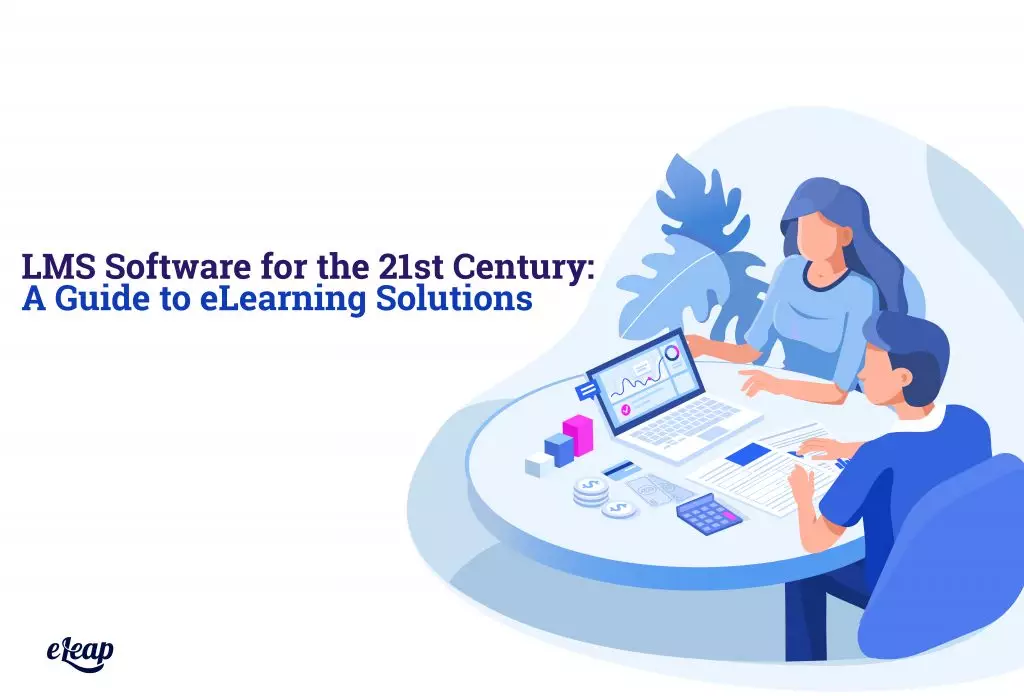The demand for online learning solutions is constantly growing and evolving. As such, the available solutions need to do the same. When you have a larger audience and you need to convey a lot of information in an easy-to-access format, eLearning through an LMS software (LMS Learning Management System) presents the ideal solution. It is important, however, to take the time to get to know the various resources that are available and see what they have to offer. By taking a deeper look at the benefits and uses of these platforms, it may be easier to see what your company stands to gain from employing technology as a teaching tool.

The eLearning Industry
There are literally thousands of vendors and companies promoting their own LMS software solutions today. That can make it a challenge to figure out which platforms are going to be best for the job at hand. In fact, in 2021, it is expected that this market will be worth close to $16 billion, with the majority of the revenue generated in North America.
Studies have shown that over 40% of the global Fortune 500 companies out there are now using some type of online learning to help instruct employees with formal job training and other educational needs. With the growing trend of online learning, it’s expected that as many as half of all available college courses are now online or somehow based in eLearning technology. It’s becoming glaringly obvious that the growing demand for virtual learning systems is there and that companies need to get on board.
The eLearning industry is changing the way people look at skill acquisition and job training. The ability to implement and manage a learning solution virtually can save companies a lot of time and money on their training efforts. Of course, because there are so many different solutions out there, it is important to take the time to explore the industry and find the solutions that work best for your specific training needs. Keep reading to learn more about LMS platforms and what you should be getting from them, as well as how you can use them to revolutionize your own training programs.
LMS-What It Means to You
Simply put, an LMS software is a Learning Management System or an integrated platform that is designed to organize and manage training materials and educational courses, providing a user-friendly interface through which people can access the materials and courses. These platforms are typically hosted online and cloud-based, making them easy to modify, adapt, and access for everyone in the organization. This system is designed to make training easier, so if you find that you are struggling to actualize that goal, you might be going at things from the wrong direction.
Just because you have and use an LMS doesn’t mean that you’re making the best use of it, after all. Some people are employing these systems without a full understanding of what they offer or they simply roll out the first LMS software that they find without taking the time to do their homework and figure out which systems are actually going to be best for their needs. Fortunately, this guide has all of the insights and information that you need to ensure that you capitalize on your investment in a learning management system, no matter what type of training you have that needs to be done.
Features of a Strong LMS Platform
There are definitely some things that you should be looking for when you’re investing in an LMS software solution for your e-learning needs. There are a seemingly endless number of features available on various platforms, but you really need to take the time to figure out which features are most important to you. Do you know what you are looking for? If you are trying to make the most of your investment in this training tool, here are some big features that you really need to think about.
Data Migration
Your online learning platform should be able to move and integrate data seamlessly. Whether you are just investing in a new system and merging your previous LMS data or you are just trying to keep things integrated, the migration process in the software that you choose should provide you with all of the resources that you need to keep everything in one place.
Built-in Social Media Support
People are social creatures by nature. Now that social media plays such a large role in careers and other parts of life, having social media support and integration can be a value-added asset to any LMS. You can often incorporate social media groups and blogs that allow users to connect and work with their peers, as well as social tracking tools that will help you keep an eye on things like participation and engagement.
Gamification (Badges, etc.)
Who doesn’t love a good competition? People are naturally competitive and if you give them the tools to gamify their learning, they are going to feel more accomplished and be more likely to succeed. Motivating people is easier when you have points, leaderboards, and other tools that appeal to the competitive nature of people. When you choose a platform with these features, you’re giving people a fun way to learn and challenge themselves while also challenging their peers.
Reporting and Analytics Tools
It does no good to have the best LMS in place if you don’t know how it’s doing or how well the training is going for your employees. Any software worth its weight is going to include reporting and analytics tools, and the best ones will have customizable reporting options. While pre-built reports are nice, you are also going to have specific metrics that you want to track that other companies might not think about. That’s why having a robust platform that offers pre-planned reports and customized reporting together is the best solution.
Collaborative Learning Resources
Although eLearning is a rather effective means of training, there is definitely something to be said for taking a collaborative approach, as well. Some people experience the best learning in social media groups, online discussions, and other collaborations. Even if most of your training is a solo activity, you should still have engaging tools that allow people to collaborate and communicate during the training process. If your platform doesn’t have integrated collaborative tools, you should at least make sure that it has the option for plug-ins or add-ons so that you can capitalize on these resources in the event that you need them.
Branding and Corporate Integration
While it might not occur to you that something like your logo and company name could impact the quality of your training materials, you really need that cohesion across the board. People might not need to see the logo on every single training page, but having a branded, personalized training program that incorporates this can definitely give people the sense of cohesiveness that they expect from online training programs that are offered at a professional level.
Personalized Learning
The ability to provide your employees with personalized learning solutions is invaluable when you employ the use of an LMS platform. Everyone knows that “one size fits all” training is not effective in any situation. Some programs will allow you to create unique non-linear courses or personalized paths to learning for your trainees to help them learn the things that they may be missing. You can customize this to people’s specific gaps or areas where they struggle to ensure that you address what people need the most.
Easy-to-Use Interface
Finally, there is no value to an LMS software that isn’t easy for people to use. It doesn’t matter how well the rest of the features work or how many other checkboxes are marked off when you invest in one of these tools. The fact of the matter is that if the platform isn’t intuitive and user-friendly, it’s not going to be successful. Make sure that you test out the platform for yourself and do so from the perspective of the least-experienced Internet or computer user. That way, you’ll know that it’s the best solution and that everyone can use it to succeed with their eLearning programs.
Cloud-Based Learning
Although most LMS software platforms are already cloud-based, there are some installed software programs available, as well. Of course, hard-installed systems won’t have as much flexibility and customization. Plus, cloud-based systems are easier to change and update, and you can allow users to access the information from just about anywhere that they desire. While cloud-based learning isn’t absolutely necessary, it certainly makes things easier. Imagine if you lose connectivity in the office or if people suddenly decide they need to check in on a training module while they’re at home. Having a cloud-based solution with access from just about anywhere can make the difference. Plus, then when you need to scale up or down, or change anything in the LMS, you aren’t investing in expensive new hardware upgrades or other costs because everything is virtual and easy to scale.
Accessibility Across Devices
Although you might only have your team training in the office, having access to the LMS platform across devices can help your team. You should choose a platform that is responsive and can be accessed across a variety of devices just in case you need smartphone or tablet access for any reason. Plus, then your trainees will be able to come back and access training resources whenever they need them. Imagine that you find yourself in a situation where the Internet is down and you still want to get the training done. Having an LMS platform that offers offline connectivity can save you from a wasted day. These are all things that are important to think about, even if they may not seem like pressing issues. The more prepared you are, the better your eLearning will be. The right platform can make all the difference.
Customized Support 24/7
The most important thing with any LMS is being able to get help when it isn’t working as it should, or in the event that you need assistance for anything. Can you reach your support team via phone, email, and/or live chat? Make sure that you ask about support services before you commit to a solution. You should also check reviews and see what other users say about ongoing support. The company might be on the ball when you are ready to sign up to work with them, but will they offer the same resources and support when you have paid for the services? That’s where it really counts.




